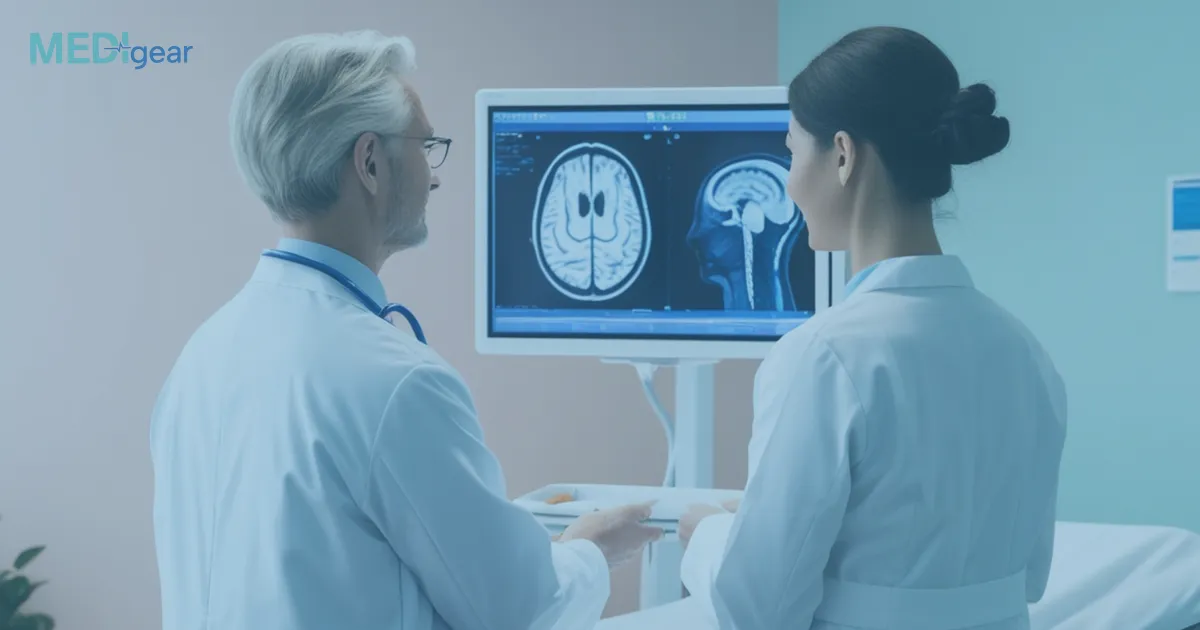Magnetic Resonance Imaging (MRI) is one of the most powerful non-invasive diagnostic tools in modern medicine — capable of producing high-resolution images of soft tissues, organs, and vascular structures. However, certain tissues or lesions can appear similar on MRI scans, making it difficult to distinguish between healthy and diseased areas.
To overcome this challenge, clinicians use contrast agents — substances that enhance image clarity by altering local magnetic properties. Traditionally, gadolinium-based contrast agents (GBCAs) have been the clinical standard. Yet, concerns about toxicity and long-term retention have prompted the search for safer, more efficient alternatives.
Enter nanomaterial contrast agents — a new generation of MRI enhancers that combine biocompatibility, precision targeting, and superior imaging contrast, redefining how radiologists visualize the human body.
1. What Are Nanomaterial Contrast Agents?
Nanomaterial contrast agents are engineered nanoparticles, typically ranging from 1 to 100 nanometers in size, designed to improve MRI signal intensity and diagnostic accuracy.
They are composed of materials with magnetic, paramagnetic, or superparamagnetic properties — such as:
- Iron oxide nanoparticles (SPIONs)
- Manganese-based nanostructures
- Gold, silica, or carbon nanocomposites
- Hybrid nanoparticles combining organic and inorganic elements
These nanoscale materials can be functionalized with targeting molecules, allowing them to accumulate in specific tissues or tumors, providing both enhanced contrast and diagnostic specificity.
2. The Limitations of Conventional MRI Contrast Agents
Traditional gadolinium-based contrast agents are effective but present several challenges:
- Short circulation time limits imaging duration.
- Non-specific distribution provides general enhancement without tissue targeting.
- Potential toxicity and retention, especially in patients with kidney impairment, raise safety concerns.
In contrast, nanomaterial-based agents offer longer blood retention, tunable surface chemistry, and the ability to target molecular markers, making them ideal for next-generation diagnostic imaging.
3. How Nanomaterials Enhance MRI Visibility
Nanomaterial contrast agents enhance MRI visibility through their magnetic and chemical properties, which modify local proton relaxation times (T₁ and T₂). This interaction increases the signal intensity difference between tissues, improving contrast and clarity.
a. Enhanced Magnetic Relaxivity
Nanoparticles exhibit strong magnetic susceptibility, which accelerates the relaxation of nearby water protons.
- T₁ agents (e.g., manganese oxide, gadolinium-doped nanoparticles) produce brighter images of target areas.
- T₂ agents (e.g., iron oxide nanoparticles) cause signal darkening, enhancing contrast between tissues.
By fine-tuning particle size, composition, and coating, scientists can control relaxivity and maximize image sharpness.
b. Targeted Accumulation
Functionalized nanomaterials can be coated with antibodies, peptides, or ligands that recognize biomarkers on diseased cells — such as tumor receptors or inflammatory markers.
This ensures that the contrast agent accumulates selectively at the site of pathology, improving visibility while minimizing background noise.
c. Extended Circulation and Retention
Surface-modified nanoparticles (e.g., PEGylated coatings) evade immune clearance, allowing them to circulate longer and continuously enhance MRI signals. This feature supports dynamic or delayed imaging, providing richer diagnostic data.
d. Multifunctional Imaging and Therapy
Many nanomaterials combine diagnostic and therapeutic functions (“theranostics”). For example, iron oxide nanoparticles can serve as MRI contrast agents while simultaneously being used for magnetic hyperthermia treatment.
This dual capability supports real-time therapy monitoring, a growing frontier in precision medicine.
4. Types of Nanomaterial Contrast Agents in MRI
a. Iron Oxide Nanoparticles (SPIONs and USPIOs)
Superparamagnetic iron oxide nanoparticles (SPIONs) are among the most extensively studied nanomaterials. They act as T₂ contrast agents, creating strong signal reductions in tissues where they accumulate — ideal for liver, lymph node, and tumor imaging.
b. Manganese-Based Nanoparticles
Manganese offers T₁ contrast similar to gadolinium but with better safety and biological compatibility. Manganese oxide nanoparticles enhance visibility in brain and cardiac imaging applications.
c. Gold and Silica Nanocomposites
Gold nanoparticles, while not inherently magnetic, can be modified with magnetic cores or combined with gadolinium or iron oxide. These multifunctional composites support multimodal imaging (MRI, CT, and optical) within one agent.
d. Carbon Nanostructures
Graphene and carbon nanotubes, when doped with metal ions, provide unique electronic and magnetic properties suitable for MRI contrast enhancement, often with high biocompatibility.
e. Hybrid and Responsive Nanoparticles
Engineered nanostructures can respond to pH, enzyme activity, or temperature, offering stimuli-responsive contrast that highlights disease-specific microenvironments such as tumor acidity or inflammation.
5. Clinical Benefits of Nanomaterial Contrast Agents
a. Improved Image Resolution
Enhanced relaxivity and tissue targeting deliver sharper, more detailed MRI images — especially useful in detecting small lesions or early-stage tumors.
b. Reduced Toxicity Risk
By minimizing free gadolinium exposure and using biodegradable materials like iron or silica, nanomaterial agents reduce long-term toxicity and improve patient safety.
c. Longer Imaging Windows
Extended circulation time allows clinicians to perform delayed scans, track biodistribution, and assess tissue uptake dynamics in real time.
d. Personalized Diagnostics
Targeted nanoparticle formulations can identify specific disease markers, advancing precision imaging tailored to each patient’s molecular profile.
e. Multimodal Functionality
Some nanomaterials combine MRI contrast with optical or PET signals, enabling multi-technique diagnostic imaging within a single injection.
6. Challenges and Future Outlook
Despite their promise, nanomaterial MRI contrast agents face several hurdles before widespread clinical use:
- Regulatory approval requires extensive safety and biocompatibility testing.
- Complex synthesis and scaling can increase manufacturing costs.
- Clearance and biodegradation mechanisms must be optimized to prevent long-term retention.
- Standardization across imaging platforms remains limited.
However, ongoing research is rapidly addressing these issues. The development of biodegradable, clinically safe nanomaterials — coupled with AI-driven image analysis — will likely bring nanocontrast MRI into mainstream clinical practice.
Conclusion
Nanomaterial contrast agents are revolutionizing MRI diagnostics by combining high-resolution visibility, tissue targeting, and safety.
From iron oxide to hybrid multifunctional nanoparticles, these innovations enable radiologists to see deeper, detect earlier, and diagnose more precisely than ever before.
As clinical translation accelerates, nanomaterial-based MRI contrast agents are set to define the next era of molecular imaging — where nanotechnology meets precision medicine.
Disclaimer:
This article is for educational and informational purposes only. It does not replace medical or professional consultation. Always follow approved guidelines and safety protocols when using MRI contrast agents.






